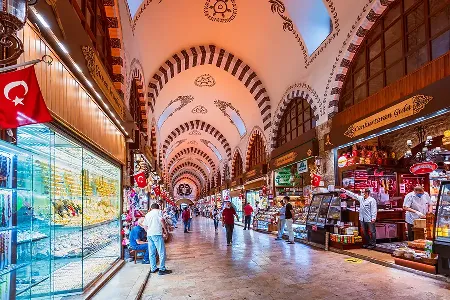
Stepping into the warm embrace of a traditional Turkish bath, known as a Hammam, transports you into the very essence of Turkish heritage—a world where the rituals of cleansing intertwine with centuries of history, wellness, and social tradition. This venerable practice, which has flourished since the Ottoman Empire, offers a sanctuary not just for physical purification but for spiritual rejuvenation, embodying a profound cultural significance that transcends mere hygiene to become a communal celebration of life, health, and connectivity in Turkiye.
The Hammam's Historical Roots
The origins of the Turkish bath trace back to the Roman era, intertwining with Islamic cleanliness rituals and the architectural grandeur of the Byzantine period. The concept was perfected during the Ottoman Empire, transforming the Hammam into a cornerstone of community life, as much a social hub as a place of hygiene and relaxation. These baths, adorned with elaborate tile work, marble, and domed ceilings, were not just architectural marvels but sanctuaries for the body and soul.
Anatomy of a Hammam Experience
Entering a traditional Hammam is like stepping into another world, where time slows, and the stresses of modern life dissolve in the steam. The experience follows a ritualistic sequence, beginning in the warm room, where the body acclimatizes to the heat and begins to relax. The journey continues in the hot room, the heart of the Hammam, where a tellak (attendant) administers a vigorous scrubbing with a kese (exfoliating glove), followed by a cascade of soap suds and a massage. This process not only cleanses the skin but also stimulates circulation, leaving the bather feeling refreshed and revitalized.
Cultural and Social Significance
Beyond its physical benefits, the Hammam serves as a cultural vessel, carrying the essence of Turkish hospitality and communal life. Historically, these baths were centers of social activity, places where news was shared, friendships were forged, and life's milestones were celebrated. Today, they remain a cherished aspect of Turkish culture, embodying the values of cleanliness, community, and wellness.
The Role in Wellness Practices
In contemporary times, the Hammam has seen a resurgence as a center of wellness and holistic health. The ritualistic nature of the bath, with its emphasis on relaxation and purification, aligns with modern concepts of self-care and mental well-being. The Hammam's ability to soothe muscles, clear the respiratory system, and promote relaxation makes it a timeless remedy for the stresses of contemporary life.
Experiencing the Hammam Today
For travelers and locals alike, a visit to a Hammam is a journey into the heart of Turkish tradition. It offers a unique opportunity to connect with the cultural heritage of Turkiye while indulging in a deeply rejuvenating experience. From the historic baths of Istanbul to the lesser-known Hammams in smaller towns, each offers its own version of this ancient ritual, wrapped in the warmth and hospitality that is quintessentially Turkish.
At its core, the Hammam is more than just a ritual of cleanliness; it represents a journey into the depths of Turkish tradition, offering a space for renewal, community, and deep-seated well-being. This venerable institution welcomes visitors to not only bask in the restorative heat of its waters but also to engage in a heritage of collective health that has anchored Turkish society for centuries. Bridging the ancient with the contemporary, the Hammam stands as an enduring symbol of Turkish cultural resilience, rendering it an essential experience for anyone eager to explore the intricate mosaic of life in Turkiye.



